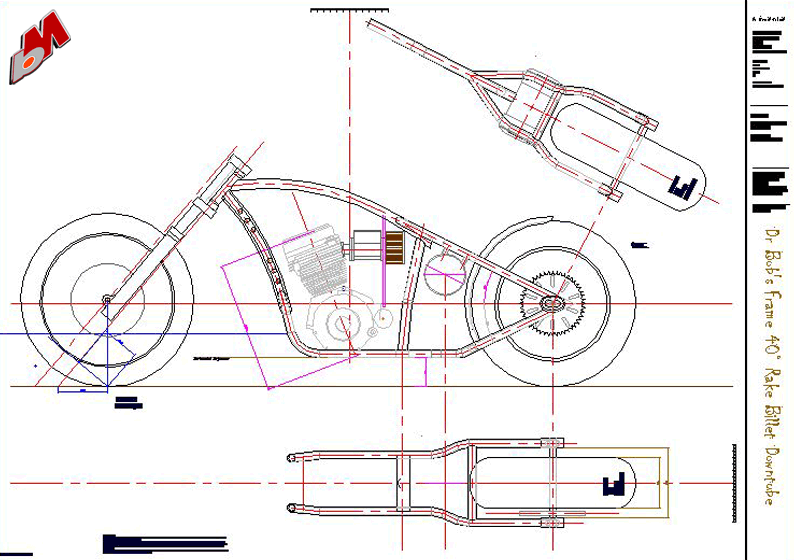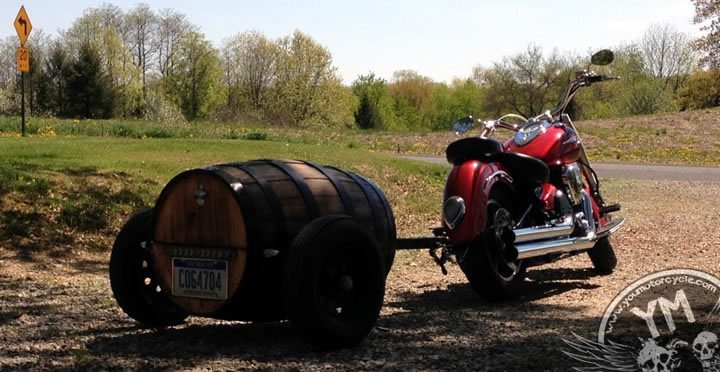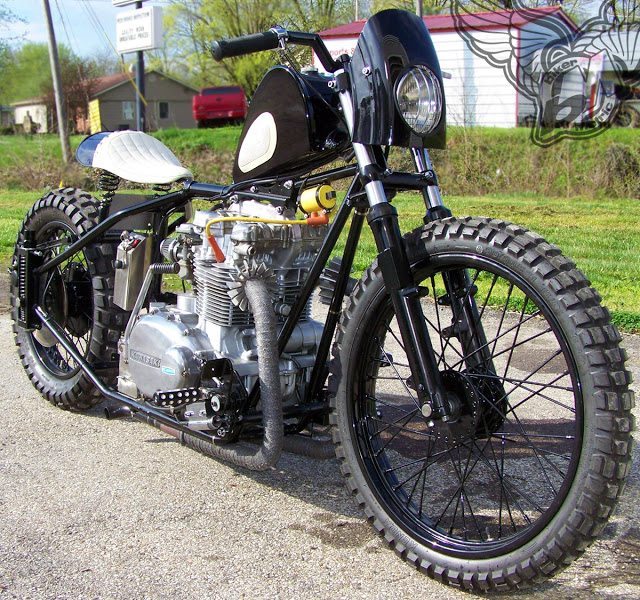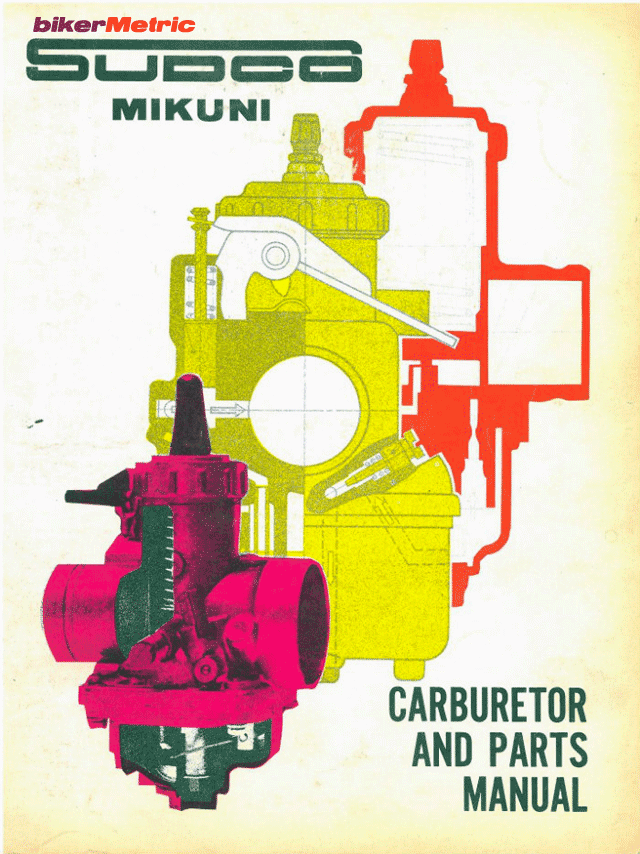We’ve spent the last few months getting our shop ready and acquiring tools and bits and pieces. Now it’s time to get busy and put all this stuff to use. Let’s build a frame.
To briefly re-cap from “You’ve Been Framed Part 1,” we decided on a rigid chopper frame to take a XS/Triumph/CB type of motor using 1″ diameter 1/8″ wall CFS 3 or DM tubing. Also recall there are two disciplines that we need to be good at and note the word NEED. They are:
1. Welding! Yeah, I know I go on about it and I make no apologies, but you have to be a good welder. Scan back thru previous articles for my reasoning. PEOPLE DIE WHEN MOTORCYCLE FRAMES ARE NOT WELDED PROPERLY. So nail it down.
2. Tube Notching. This is one of the areas that drives most people nuts when they first get into building frames. Sadly, like welding, the only real way to learn how to do it is to actually do it. After you have the feel for it, you’ll wonder why it was ever so **** difficult, just like welding. I don’t believe in coincidence and I firmly believe that these two relatively easy disciplines are important for a purpose. Knowing them sorts the men from the boys (and the posers). In other words, if you can’t persevere with learning them and getting them right, you shouldn’t be building frames to begin with. Go away and view some ***********. In the last article I suggested you get some cheapo tube and practice, practice, practice your tube/metalwork skills. Hopefully you all took note and can now weld and notch tube good enough to be a member for the next Olympic Welding and Tube Notching team.
We will also need a tool that I forgot in the last techTip, and for this I apologize; it’s an angle meter (pic below). It’s not an expensive tool and they are all over the internet. A great tool, it has a magnetic base so you can just stick it on the tube and read the angle. A MUST HAVE.
Now, where to start? Well, as most of this activity is going to be on or around our frame jig, let’s start there.
First thing to do is to put the neck in the jig at the required rake angle and at the required height. There are a few ways of working this out and it all depends on how precise to you want to be. If you have a state-of-the-art technical drawing nailed up on the wall, then the dimensions are already on there and you just read ’em off and fit the neck in place on the jig. If not, and I suspect this is most of you, then we have to do a bit of calculating. To start with, we aren’t modding a standard frame so we can’t go for a wander around the the next bike meet and find something suitable to measure. We have to think of something else. Well, we did actually start with a sketch on a bar napkin as I recall. Ask yourself these questions:
1. Am I happy with this overall look?
2. Is there ANYTHING about this I would change NOW, before I take the saw to it? If you’re happy with what you have as a design, pin it on the wall.
Okay, now that’s in place and we have a starting point. It might be worth getting a few photocopies and keeping them in a clean place for the duration of the build.
Using your sketch as a reference, you’ve decided you’re happy with how it looks; it’s rake, neck height, seat height, and all that. Now you have to make some metal look like it. Easy!
The first thing is to find a protractor and measure the rake angle on your sketch. This angle is inclined forwards and upwards from an imaginary straight line perpendicular to the ground drawn through the center of the neck starting at the top, and intersects at zero degrees with another imaginary line drawn straight down from your front wheel’s axle.
It’s unlikely unless you have the eyesight of a bird of prey that you will see anything plus or minus half a degree with a protractor. I’d recommend sticking to whole degrees at this stage. For example, if you think you’ve measured 39.5 deg, round it up to 40 or down to 39, it’s your call. It’s not as if we are fine tuning Rossi’s Duke for the next Moto GP. We can get into handling and rake and trail later. Suffice to say at this stage we need to get into the ballpark and see what we have. Therefore, for the sake of our exercise, let’s settle on a rake of 38 degrees – not Trent’s crazy 51 degree rake pictured in his helpful diagram – which is not too outrageous and should in theory give us a workable trail when we come to figure that out.
Now how about height. How the **** do we work that out from a cocktail napkin sketch?
Well, it might be a rough sketch on a beer stained bar napkin to everyone else, but to us it’s a detailed blueprint and has a wealth of information all over it.
Believe it or not, the first measurements we can nail down are the axle heights. In our case we are going for a 21″ front wheel and an 18″ rear. A 21″ front has a rolling radius of 26″, depending on the tire. It can vary by maybe .25 to .5 of an inch but you’re safe saying 26 inches in this case. An 18″ rear has a rolling radius of 24″, and the same rules apply there as to the front. Now, what does this tell us apart from what sizes the wheel/tire combos are? To start with, if we divide these sizes in half we get our front and rear axle heights. If we decide on a ride height, let’s say five inches at the lower rails, we now know that the rear axle carrier in the jig can be set to seven inches from the top of the jig bottom rails. Remember that the top of the frame jig rails equates to the bottom of the lower frame rails.
Important dimension #01 sorted out, so let’s move on. If we know where our bottom rail is going to be (five inches off the floor), and we know that our front wheel is 21″, then we can calculate from our sketch the height we want to try our neck at. I say “try” because until we have completely mocked this up in steel and are happy with it, it’s all hypothetical, but this is how we get there. If we measure the front wheel on my sketch, it comes out at two inches, there’s my scale, 2″= 21″. From this I can pretty much determine almost everything else. From my sketch I can measure the top of the neck and it’s at 2.5″ from the bottom of the frame rails, which scaled up gives me a distance of 31.5″. I’m gonna round that up to 32″ just because of pencil line thickness, but it also takes out an unnecessary fractional measurement that we don’t really need.
We can now put the neck in place at the right angle and at the right height. 38 degrees of rake and 32″ from the bottom of the bottom rails to the top of the neck. So far so good…. What’s next? We have our two ends – the neck at the front and axle at the rear – almost in place, but we don’t actually have the distance between them yet. We do have the neck nailed into place though and my logic tells me to work front to rear, so let’s pull the engine out from under the bench and roughly site it the jig. Again, using our sketch as our reference we need to chock it into place using bits of old timber/brick/whatever, but the important position is 1″ up off the frame jig rails to account for frame tube thickness.
Now if you remember back to previous tips, I suggested in every one of them that you acquire a half dozen or so three foot long pieces of 1″ dowel. I distinctly remember going on and on about it. Yes, I did! Okay, so I didn’t, and it’s too late now, but we need at least one at this juncture, so run out and get some at the hardware store or cut off the handle of your broom.
(waits…. gets a beer…)
Okay. Now lay the broomstick/dowel against the lower half of the steering neck and the front of the engine. Step away and see what that looks like. Yep, you guessed it, we are now nailing down the angle of our downtubes. Position it in such a way that it simulates your sketch and look where the front engine mounts are going to end up. While not particularly critical, the smaller any plates can be in the engine mount world the more solidly mounted your engine is going to be. When you’re happy that it looks good, measure the angle, keeping it relative to the neck for simplicity, and you’ll find you end up with a measurement somewhere between 67 and 72 degrees. Write it down because it’s the first bend we’ll be doing later.
Having nailed down our neck and engine position, we now need to sort the rear engine mount and seat post position. Again with our broomstick/dowel, position it behind the engine close enough to imagine your engine mount plates/slugs/whatever the system is for your particular engine, but not so close that lifting the engine in and out would be hampered. This is a good time to break out the duct tape. Take your first broomstick/dowel and cut it to fit more or less where the front downtubes are going to be. Cut the second one that you’re using to mock up the seat post with a tad longer, about two inches, and tape that in position. You may want it straight up, leaning forward slightly, or leaning back. It’s your choice, however you fancy it. Now tape it into place. Take another broomstick and tape it into place as your backbone from the neck straight back through the seat post position and tape that in place when you’re happy with the angle. Stand back and take a good hard critical look at what you have done. It should more or less look like the front half of the frame you dreamed of and sketched on your beer stained napkin.
The next step is to mock up your battery box, decide where to place your oil tank (for ease of explanation we’ll stick with the conventional under-the-seat-slot), electricity box, handgun and knife storage, etc. Mocking the battery box up in the jig also gives us the position that the lower rails will kick up and meet the rear axle carrier. Again, break out the duct tape and the broomstick/dowels and mock that tube up into position.
Now we are ready for the top tubes. The top tube (AKA: backbone) now needs to be mocked into place. Again with the duct tape and dowels, mindful that this needs to come down to just past the top of the seat post. Play with this angle to get your desired look. You now have a position where the frame top rear rails are going to start from and head down to the top of the rear axle carrier. It’s difficult one to mock up with a broomstick because it has a bend in it, and really hardly worth the bother. The only real reason for doing this is to be sure the angle of the rear rails isn’t the same as the backbone angle from the neck. Now sit back with a cold one and see if what you have mocked up in front of you is what you’ve been dreaming of.
Now put the kettle on just in case I pop ’round to see how you’re doing! Next time we turn the broomsticks into bedknobs…

Get the best of bikerMetric directly in your inbox, once a week, every week.
[wysija_form id="1"]
 bikerMetric custom metric bobbers, choppers, and cafe racers by honda, yamaha, kawaski, and suzuki
bikerMetric custom metric bobbers, choppers, and cafe racers by honda, yamaha, kawaski, and suzuki














